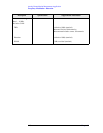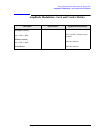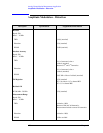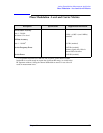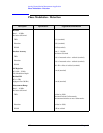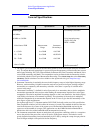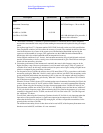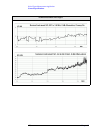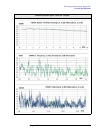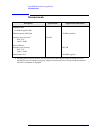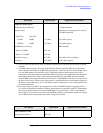
156 Chapter 12
Noise Figure Measurement Application
General Specifications
Description Specifications Supplemental Information
Gain
Instrument Uncertainty
a
a. “Instrument Uncertainty” is defined for gain measurements as uncertainty due to relative amplitude
uncertainties encountered in the analyzer when making the measurements required for the gain compu-
tation.
See Agilent App Note 57-2, literature number 5952-3706E for details on the use of this specification.
Jitter (amplitude variations) will also affect the accuracy of results. The standard deviation of the mea-
sured result decreases by a factor of the square root of the Resolution Bandwidth used and by the
square root of the number of averages. This application uses the 4 MHz Resolution Bandwidth as
default since this is the widest bandwidth with uncompromised accuracy.
Under difficult conditions (low Y factors), the instrument uncertainty for gain in high band can domi-
nate the NF uncertainty as well as causing errors in the measurement of gain. These effects can be pre-
dicted with the uncertainty calculator.
DUT Gain Range = −20 to +40 dB
<10 MHz
b
b. Uncertainty performance of the instrument is nominally the same in this frequency range as in the
higher frequency range. However, performance is not warranted in this range. There is a paucity of
available noise sources in this range, and the analyzer has poorer noise figure, leading to higher uncer-
tainties as computed by the uncertainty calculator.
10 MHz to 3.6 GHz ±0.15 dB
3.6 GHz to 26.5 GHz
±0.11 dB additional
c
95
th
percentile, 5
minutes after calibration
c. For frequencies above 3.6 GHz, the analyzer uses a YIG-tuned filter (YTF) as a preselector, which adds
uncertainty to the gain. When the Y factor is small, such as with low gain DUTs, this uncertainty can be
greatly multiplied and dominate the uncertainty in NF (as the user can compute with the Uncertainty
Calculator), as well as impacting gain directly. When the Y factor is large, the effect of IU of Gain on
the NF becomes negligible.
When the Y-factor is small, the non-YTF mechanism that causes Instrument Uncertainty for Gain is the
same as the one that causes IU for NF with low ENR. Therefore, we would recommend the following
practice: When using the Uncertainty Calculator for measurements above 3.6 GHz, fill in the IU for
Gain parameter with the sum of the IU for NF for 4 - 6.5 dB ENR sources and the shown “additional”
IU for gain for this frequency range. When estimating the IU for Gain for the purposes of a gain mea-
surement for frequencies above 3.6 GHz, use the sum of IU for Gain in the 0.01 - 3.6 GHz range and
the “additional” IU shown.
You will find, when using the Uncertainty Calculator, that the IU for Gain is only important when the
input noise of the spectrum analyzer is significant compared to the output noise of the DUT. That
means that the best devices, those with high enough gain, will have comparable uncertainties for fre-
quencies below and above 3.6 GHz.
The additional uncertainty shown is that observed to be met in 95
% of the frequency/instrument com-
binations tested with 95
% confidence. It is not warranted.



